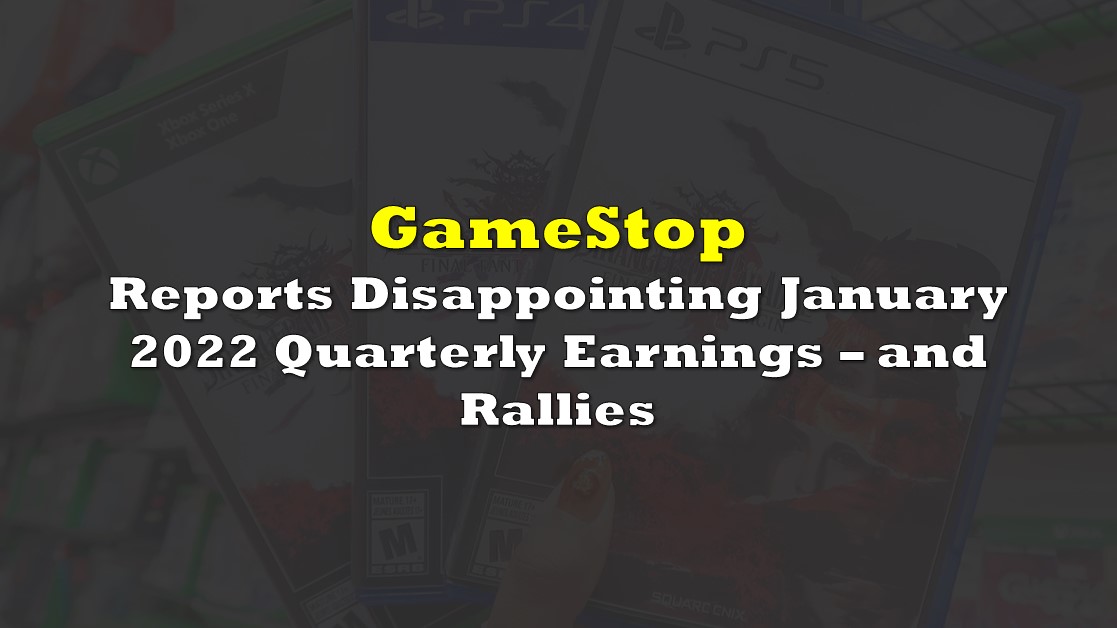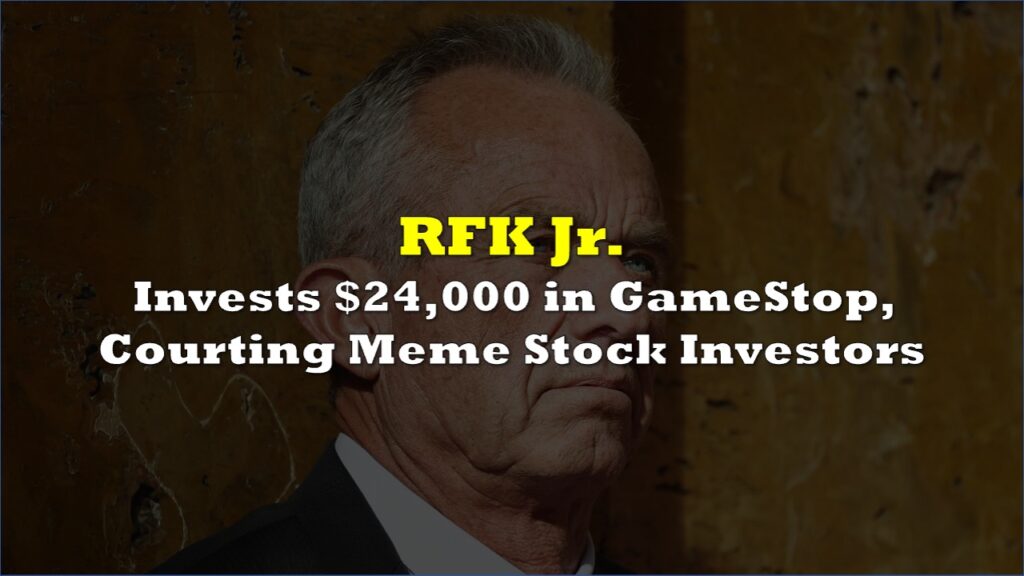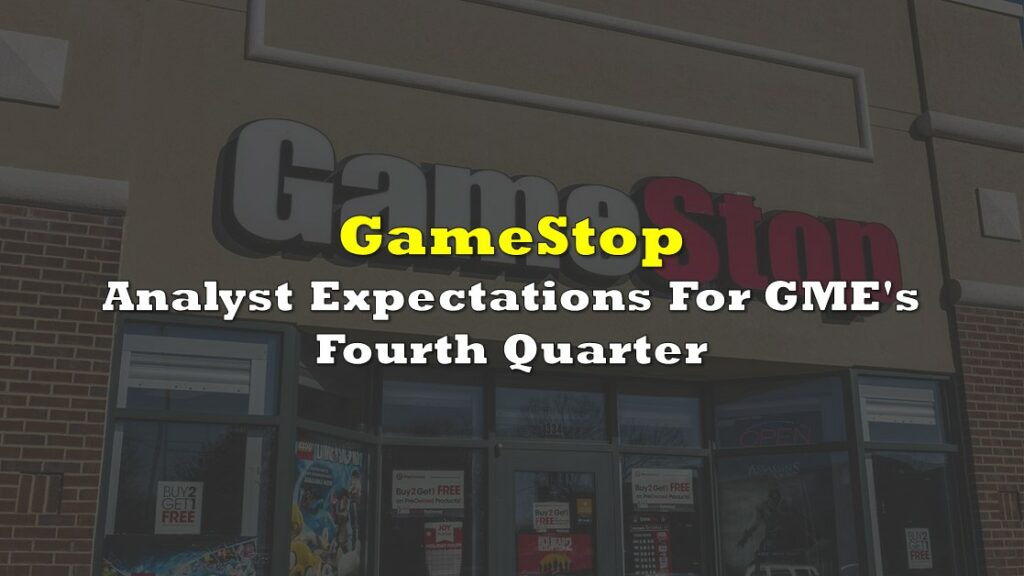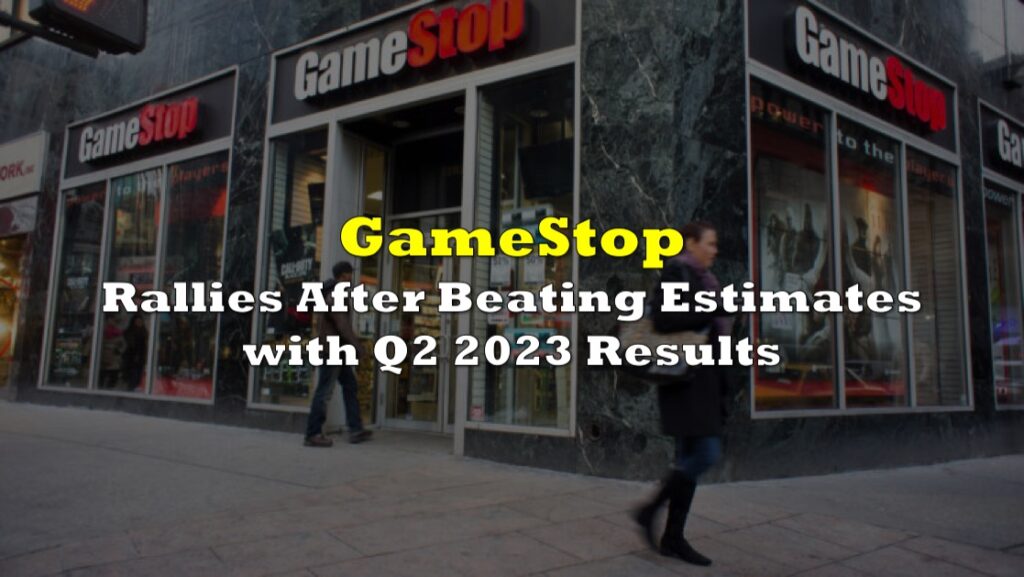GameStop Corp. (NYSE: GME) stock remains one of the most difficult-to-understand trading vehicles in the stock market. The video game retailer, and perhaps the original meme stock, reported disappointing 4Q FY2022 (period ending January 2022) results after the market close on March 17. GameStop shares initially plunged about 10% in after-hours trading but turned around the next day and are now about 7% higher than before the earnings report.
In 4Q FY22, the typically quite profitable holiday shopping quarter, revenue reached US$2.25 billion, up more than 70% from the quarter ended October 2021, but both GameStop’s adjusted EBITDA loss and adjusted operating income loss widened sequentially to (US$127) million and (US$161) million, from (US$80) million and (US$103) million, respectively. GameStop’s high spending levels to diversify into other areas, including establishing a non-fungible token (NFT) marketplace, drove the accelerated red ink.
| (in millions of U.S. dollars, except for shares outstanding) | Full Year FY22 Jan. 2022 | 4Q FY22 | 3Q FY22 | 2Q FY22 | 1Q FY22 |
| Revenue (A) | $6,011 | $2,253.9 | $1,296.6 | $1,183.4 | $1,276.8 |
| Adjusted EBITDA (A) | ($236.9) | ($126.9) | ($79.8) | ($29.5) | ($0.7) |
| Adjusted Operating Income | ($336.6) | ($160.7) | ($102.9) | ($51.4) | ($21.6) |
| Adjusted Diluted EPS | ($4.56) | ($1.86) | ($1.39) | ($0.76) | ($0.45) |
| Operating Cash Flow | ($434.3) | ($110.3) | ($293.7) | ($11.5) | ($18.8) |
| Cash | $1,271.4 | $1,271.4 | $1,413.0 | $1,720.4 | $694.7 |
| Debt (primarily Convertible) | $649.0 | $649.0 | $667.8 | $701.0 | $712.5 |
| Fully Diluted Shares Outstanding (Millions) | 75.9 | 75.9 | 75.9 | 72.6 | 66.0 |
The company provides no guidance on the spending necessary to achieve its goals and takes no questions on its conference calls, so it is difficult to estimate the overall magnitude of future cash outlays and their duration. It does seem fair to conclude that the next few quarterly results could be substantially worse than the January 2022 quarter, as the boost from holiday sales of video games will not be present in those periods.
GameStop has the balance sheet strength to continue to spend aggressively for at least a few more quarters, as its cash balance totaled US$1.27 billion as January 29, 2022. Its operating cash flow shortfall was US$110 million in the high-revenue 4Q FY22 and US$294 million in 3Q FY22 (October 2021), a more typical quarter.
GameStop’s stock market capitalization is about US$7.15 billion, and its enterprise value is around US$6.5 billion, after factoring in the company’s cash position and its total debt of US$649 million. The company’s current overall valuation seems difficult to justify when compared with sequentially growing adjusted quarterly EBITDA losses of US$1 million, US$30 million, US$80 million and US$127 million throughout FY 2022 (ended January 2022).
One of the original predicates for investing in GameStop thirteen months ago, a potential squeeze which would force short covering at almost any price, seems not to be in place today. As of the end of February 2022, only about 15% of GameStop’s outstanding shares, and 25% of its float, have been sold short, far less than year-ago figures of 100% or more.
As is the case with many high valuation stocks, GameStop has lost more than half its stock market value since November 2021. While perhaps tempting to think this decline has created an opportunity for investors, the company’s fundamentals and still-high valuation suggest otherwise. Investors still do not know precisely what the new GameStop will look like and cannot reliably estimate its normalized future earnings and cash flows.
GameStop Corp. last traded at US$93.66 on the NYSE.
Information for this briefing was found via Edgar and GameStop Corp. The author has no affiliations related to this organization. Not a recommendation to buy or sell. Always do additional research and consult a professional before purchasing a security. The author holds no licenses.









